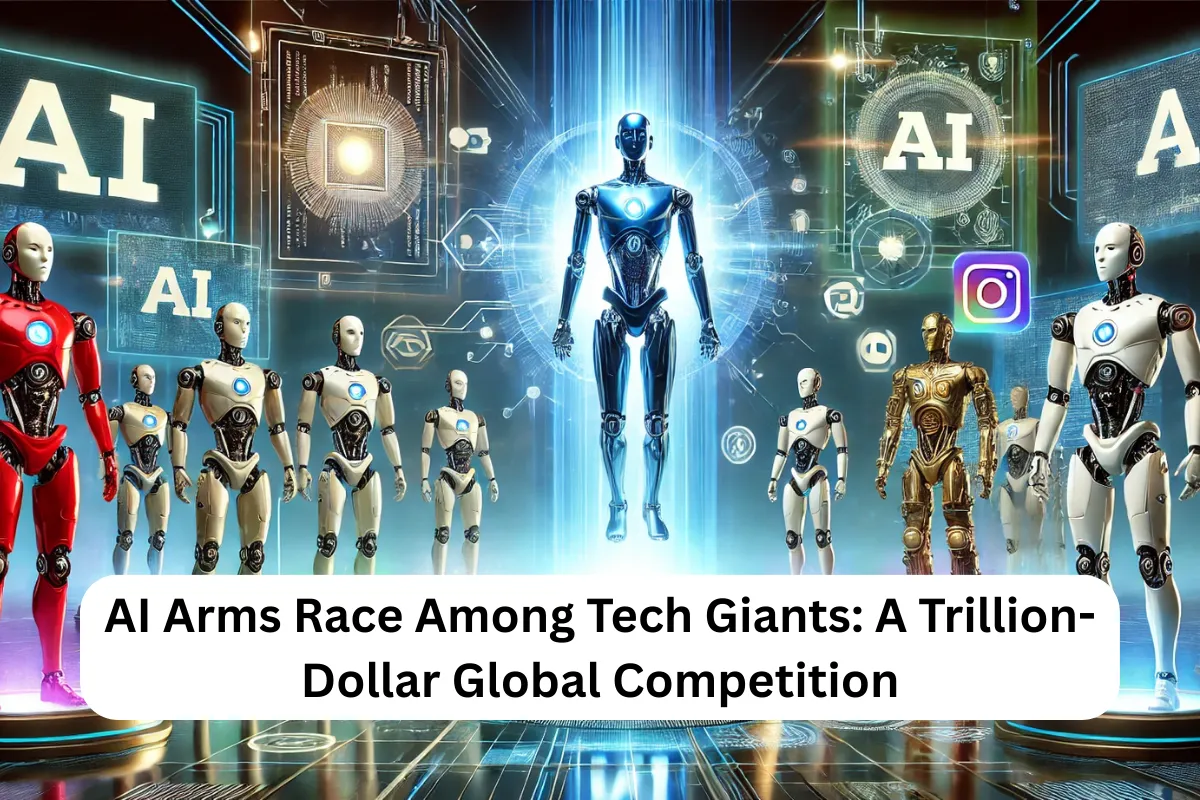The AI arms race among tech giants is accelerating at an unprecedented pace. Companies like Google, Amazon, and Meta are pouring tens of billions of dollars into AI research, cloud infrastructure, and next-generation tools. This massive investment is fueling a trillion-dollar global competition, where each company seeks to dominate AI innovation, deployment, and market influence.
The stakes are high. AI is no longer just a tech advancement—it is a strategic asset that can reshape economies, influence geopolitics, and redefine the competitive landscape in multiple industries.
Why the AI Arms Race Matters
The battle among these tech giants isn’t just about revenue; it’s about technological supremacy. AI capabilities can enhance search engines, advertising, cloud computing, autonomous systems, and more. Companies investing heavily now hope to secure the dominant AI platforms of the future, positioning themselves as indispensable to businesses and consumers worldwide.
Cloud infrastructure plays a pivotal role. Google Cloud, Amazon Web Services (AWS), and Meta’s AI platforms are competing to provide scalable, high-performance AI tools for developers and enterprises, which further fuels the race.
Tech Giants Leading the Charge
| Company | Investment Focus | Key AI Initiatives |
|---|---|---|
| AI research, cloud infrastructure, AI chips | Bard AI, TPU chips, DeepMind advancements | |
| Amazon | Cloud AI, logistics AI, consumer AI | AWS AI services, Alexa improvements, robotics |
| Meta | AI research, generative AI, AR/VR integration | LLaMA models, AI for social media moderation, Horizon Workrooms |
| Microsoft | AI integration in enterprise, cloud AI | Copilot, Azure AI, partnership with OpenAI |
| Apple | AI hardware and personal assistants | Siri improvements, AI in devices, on-device ML |
These investments highlight a multi-layered approach—ranging from cloud computing dominance to generative AI, machine learning hardware, and immersive technologies.
Challenges in the AI Arms Race
Despite enormous investments, tech giants face several hurdles:
- Regulation and Ethics: Governments are introducing stricter AI laws, data privacy concerns, and usage limits.
- Talent Scarcity: Hiring top AI talent is competitive and expensive.
- Energy & Infrastructure Costs: Massive AI models consume huge amounts of electricity, raising sustainability concerns.
- Market Saturation: Companies must balance innovation with realistic ROI expectations.
The AI arms race also sparks collaboration alongside competition, as companies partner with universities, startups, and governments to accelerate research.
The AI arms race among tech giants is transforming the global tech landscape. With trillions at stake, companies like Google, Amazon, and Meta are racing to establish supremacy in AI infrastructure, research, and deployment. While the benefits of AI are immense, this competition also raises questions about ethics, sustainability, and market concentration, making it a defining factor for the next decade of technology.
FAQs on AI Arms Race
1. What is the AI arms race among tech giants?
It refers to the intense competition between major tech companies to dominate AI research, infrastructure, and market influence.
2. Which companies are leading the AI arms race?
Google, Amazon, Meta, Microsoft, and Apple are at the forefront, investing billions in AI development.
3. Why are these companies investing so heavily in AI?
AI provides strategic advantages in cloud services, consumer products, automation, and emerging technologies like generative AI and AR/VR.
4. What challenges do these companies face in the AI arms race?
Challenges include regulatory constraints, talent shortages, high energy costs, and market saturation risks.
5. How does the AI arms race affect consumers and businesses?
Consumers benefit from smarter tools and services, while businesses gain access to advanced AI solutions, but ethical, privacy, and market-concentration issues may arise.
